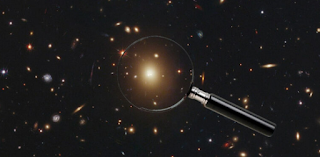Stargazers have detected an inaccessible system bunch without the normal supermassive dark opening at its middle — notwithstanding the way that its mass should be somewhere close to three and 100 billion times that of the Sun.
The dark opening was guessed to be in the universe bunch Abell 2261, about 2.7 billion light a long time from Earth, as per perceptions made somewhere in the range of 1999 and 2004, as per a NASA explanation.
All the more as of late, cosmologists from West Virginia University utilized NASA's Chandra X-beam Observatory and Hubble Space Telescope to investigate the zone — and couldn't locate the dark opening.
Pretty much every huge world in the realized universe contains a supermassive dark opening. The more gigantic the world, the more huge the dark opening. Truth be told, this specific dark opening was anticipated to be one of the biggest on record.
To put the possibility of something a hundred billion times the mass of the Sun into viewpoint, the Milky Way's focal supermassive dark opening is assessed to be just multiple times the mass of the Sun.
However, it's missing. To clarify that, researchers have advanced a few clarifications.
The first is that the dark opening might have been launched out from its host cosmic system because of two universes converging to make one significantly more huge world, also called a "pulling back dark opening."
Then again, the two systems' individual dark openings might have converged into one significantly greater supermassive dark opening, making a huge center at the focal point of the subsequent uber world. While this marvel still can't seem to be straightforwardly noticed including dark openings at such a scale, cosmologists have noticed consolidations including significantly more modest dark openings.
In a paper set to be distributed in the diary American Astronomical Society, a group drove by Sarah Burke-Spolaor from West Virginia University set forward two further potential clarifications: either there basically is anything but a dark opening there, or there is to be sure a dark opening that simply isn't sufficiently dynamic to deliver any perceptible measures of X-beams to appear in Chandra perceptions.
The researchers are planning to utilize NASA's impending James Webb Space Telescope to have a more critical look.







No comments:
Post a Comment